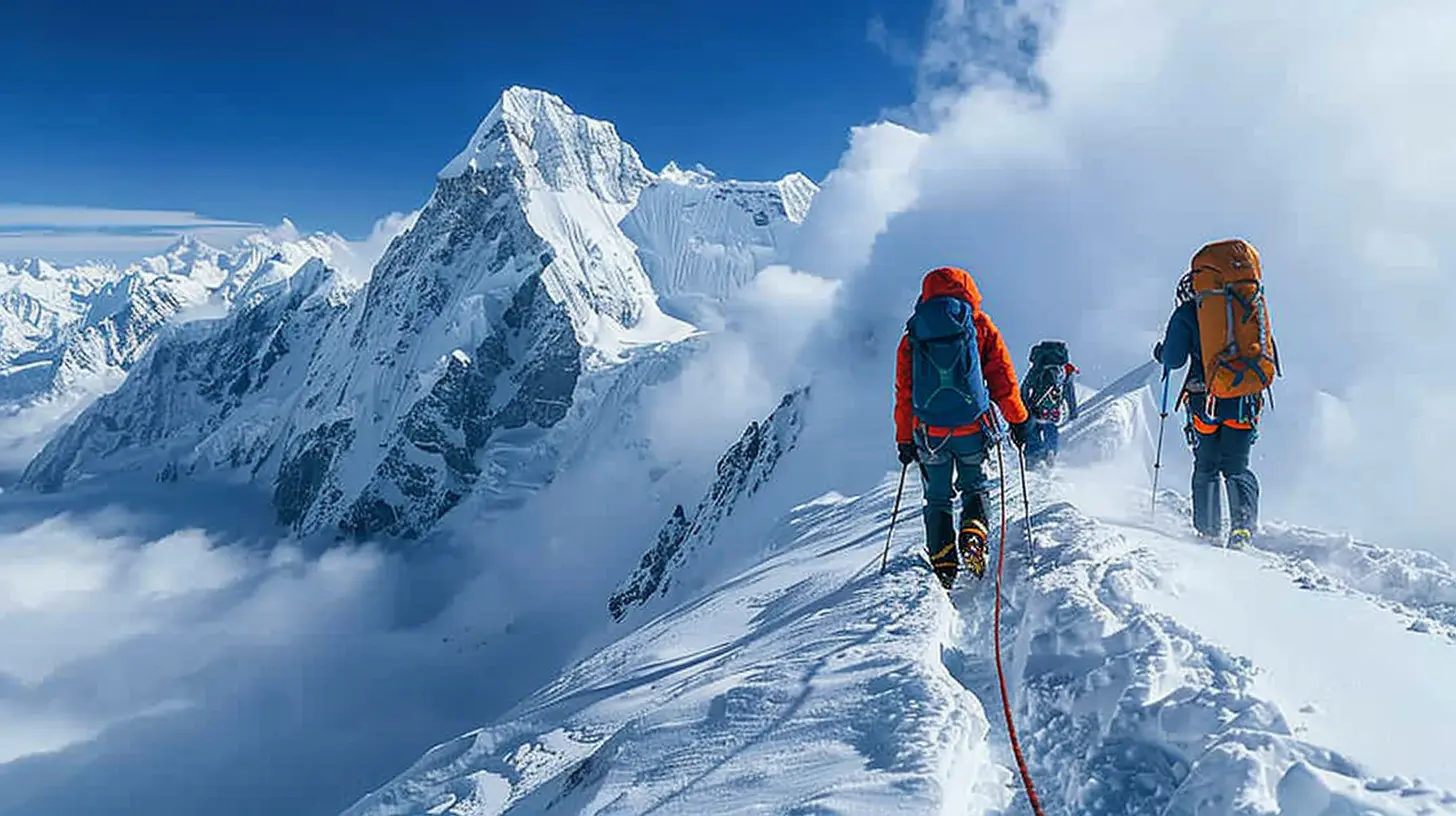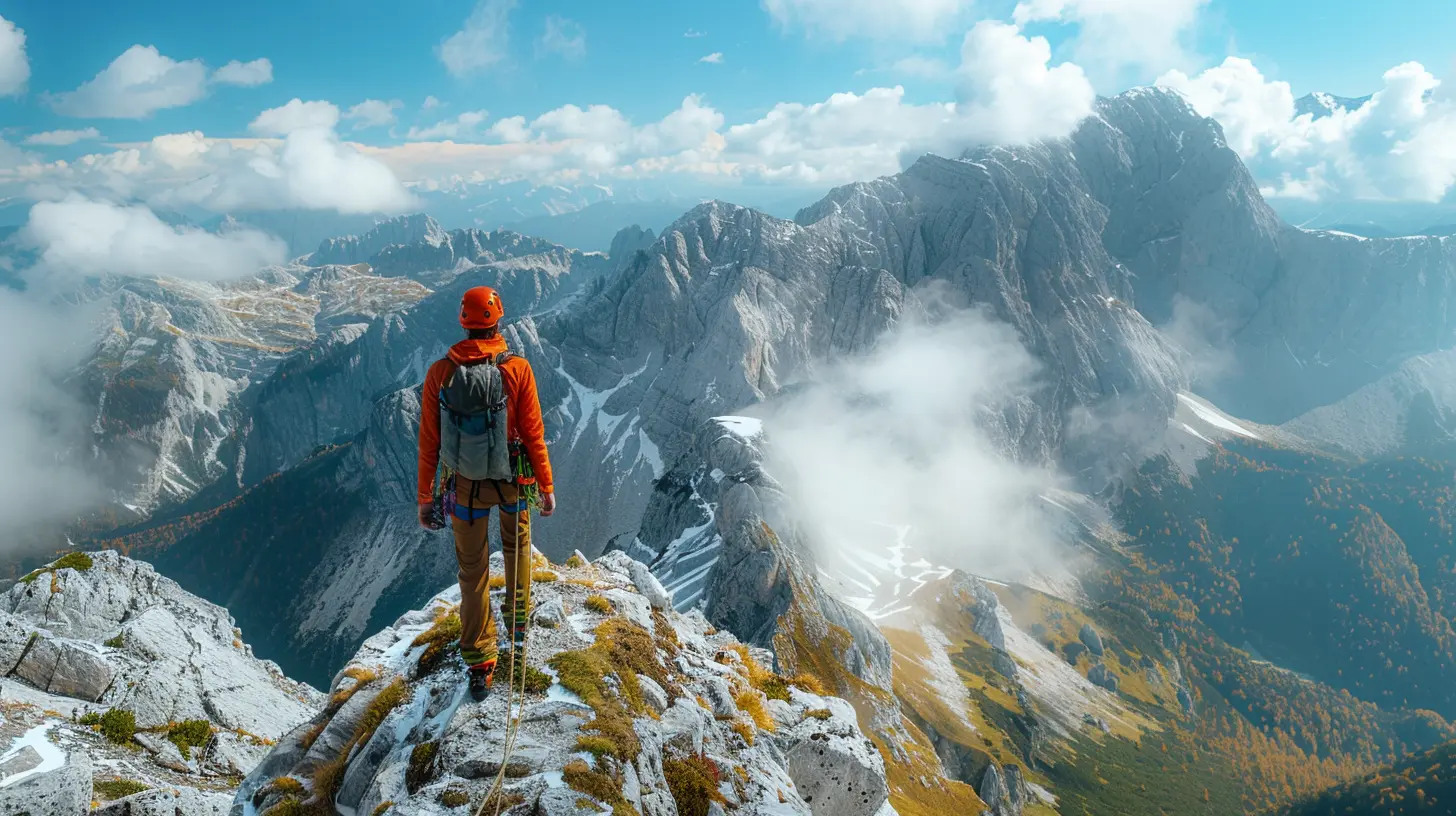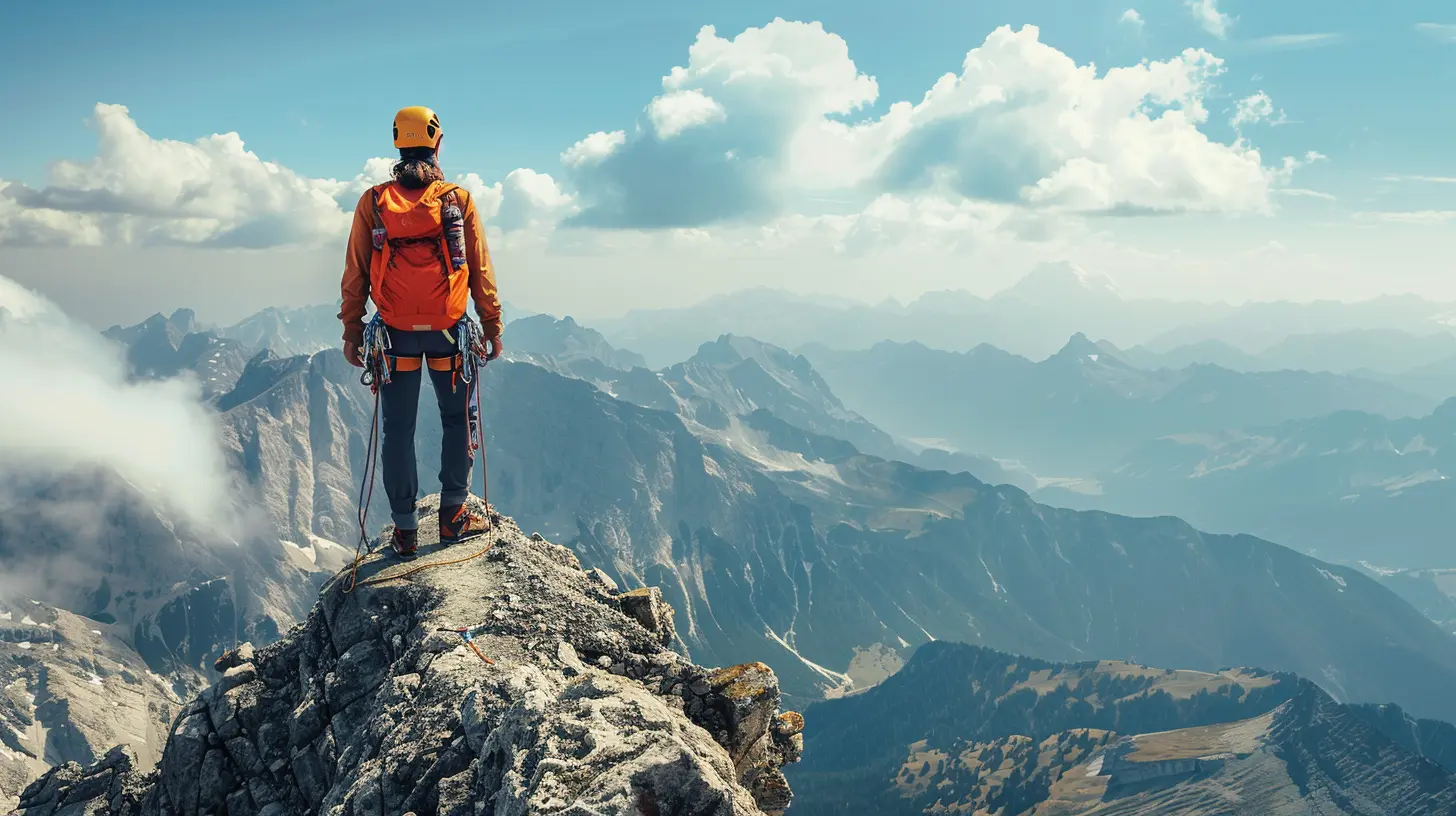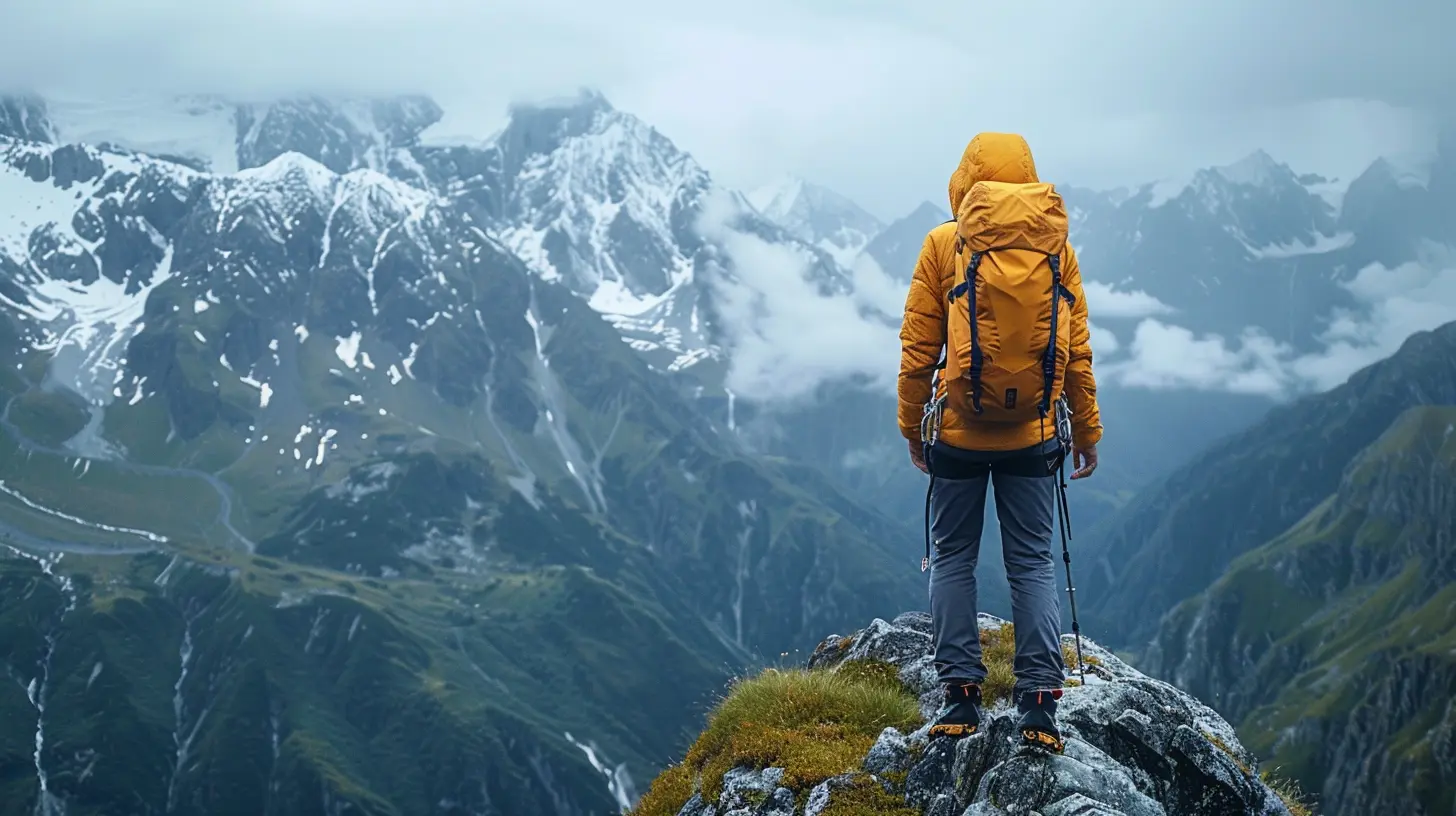How to Prepare for Your First Mountain Climbing Experience
23 April 2025
So, you've decided to conquer a mountain, huh? Feeling brave? Or did your adventurous friend sign you up, and now you're too embarrassed to back out? Either way, you're in for an epic ride—literally, up a giant pile of rock and dirt. But before you start imagining yourself planting a flag at the summit, there's a bit of prep work to do.
Mountain climbing isn’t just a casual stroll through the hills. It takes stamina, the right gear, and, most importantly, a solid plan—unless you enjoy getting lost and becoming best friends with a grumpy mountain goat. Let’s dive into everything you need to know to get ready for your first big climb! 
1. Pick the Right Mountain (Avoid Everest… For Now)
Look, we all love the idea of standing atop Mount Everest, arms stretched wide, yelling, "I AM THE KING OF THE WORLD!" But let’s be realistic: if your main form of exercise is running to catch the ice cream truck, you might not be ready for that level of extreme climbing just yet.Start small. Choose a beginner-friendly mountain—something challenging but doable. Think of it like dating: you don’t propose marriage on the first date, and you don’t climb Kilimanjaro on your first trek.
Some great beginner mountains include:
- Mount Monadnock (USA) – Short but rewarding.
- Ben Nevis (Scotland) – The highest in the UK, but still beginner-friendly.
- Mount Fuji (Japan) – Stunning views and well-marked trails. 
2. Get in Shape (Because Mountain Goats Are Fit, and You Should Be Too)
You don’t have to become a hardcore athlete, but you do need some basic endurance. If climbing a flight of stairs makes you want to nap, it’s time to hit the gym.Training Tips:
- Cardio Workouts – Running, cycling, and swimming help build lung capacity.- Leg Strengthening – Squats, lunges, and calf raises (because nobody wants wobbly legs halfway up the climb).
- Hiking Practice – Start with small hikes and gradually increase intensity.
- Balance and Flexibility – Yoga can help prevent injuries and make you less likely to trip over your own feet.

3. Gear Up Like a Pro (Or at Least Look Like One)
Climbing without the right gear is like going on a road trip without gas—you won't get very far. Here's what you need:The Essentials:
- Hiking Boots – Fashionable sneakers won’t cut it; get waterproof, ankle-supporting boots.- Backpack – Big enough to carry essentials but not so big it feels like you're lugging around a mini-fridge.
- Weather-Appropriate Clothing – Layers are your best friend. Mountains have mood swings, so expect sunshine, rain, and maybe even snow.
- Navigation Tools – A map, compass, or GPS. (No, your phone doesn’t count—mountains are notorious for bad cell service.)
- Food & Water – Energy bars, trail mix, and a hydration system. Nobody likes hiking with a "hangry" climber.
- Emergency Gear – First aid kit, whistle, flashlight, and extra batteries.
Don’t go overboard, though. You’re climbing a mountain, not moving to a new country. Pack smart! 
4. Master the Art of Packing (A.K.A Not Looking Like a Struggling Turtle)
Packing is an art. Too little, and you’ll freeze, starve, or get lost. Too much, and you'll look like a struggling turtle slowly waddling uphill.Packing Tips:
- Keep heavier items close to your back for better balance.- Distribute weight evenly (unless you enjoy leaning sideways while hiking).
- Easy-access pockets are lifesavers for snacks and quick essentials.
If your bag weighs more than your enthusiasm, you’ve packed too much.
5. Understand the "Leave No Trace" Rule (Don't Be THAT Person)
Nobody likes litterbugs. Ever seen a mountain covered in snack wrappers? No? Good, let’s keep it that way. Follow the golden rule: Leave No Trace.How?
- Pack out all trash (yes, even that banana peel—it’s not as "natural" as you think).- Stay on marked trails to avoid damaging fragile ecosystems.
- Be considerate of wildlife. That squirrel doesn’t need your leftover sandwich.
Respect nature, or Mother Earth will find a way to repay you (probably with bad weather).
6. Acclimate to the Altitude (Because Gasping for Air Like a Fish Isn’t Fun)
If your climb involves significant elevation gain, be prepared for altitude changes. Your lungs need time to adjust unless you enjoy feeling lightheaded and dizzy.Prevent Altitude Sickness:
- Take it slow—rushing increases the risk.- Stay hydrated—water is your best friend.
- Sleep at a lower altitude if possible before climbing higher.
- Avoid alcohol before the climb (save the celebration drinks for the summit).
If you feel nauseous or dizzy, don’t ignore it. Descend if necessary—your safety is more important than bragging rights.
7. Prepare for the Unexpected (Because Mountains Are Unpredictable)
Even the best-prepared climbers can run into trouble. Weather can change in an instant, trails can become hazardous, and sometimes, you’ll just take a wrong turn (don’t worry, it happens to the best of us).Safety Tips:
- Tell someone your plans – If you go missing, at least people will know where to start looking.- Carry extra food and water – Just in case.
- Have an emergency plan – Know what to do if things go south.
Remember, mountain climbing isn’t a race. Take your time, stay safe, and enjoy the adventure!
8. Enjoy the Climb (Seriously, It’s Supposed to Be Fun!)
You’ve trained, packed, and planned—now it’s time to enjoy the experience! The journey is just as important as the destination, so take in the views, snap some photos, and savor every moment.Sure, your legs might hate you the next day, and you might question your life choices halfway up, but when you reach that summit, it’ll all be worth it. The sense of achievement, the breathtaking view, and the sheer joy of knowing you DID IT—there’s nothing quite like it.
So go on, get out there, and climb that mountain! Just don’t forget to take a victory selfie at the top.
Conclusion
Preparing for your first mountain climb isn’t as terrifying as it seems. With the right training, gear, and mindset, you’ll be conquering peaks like a pro in no time. Start small, train hard, and most importantly, have fun!So, are you ready to take on your first mountain? Just remember: the best climber isn’t the one who reaches the top the fastest—it’s the one who makes it back down safely (and with the best stories to tell).
all images in this post were generated using AI tools
Category:
Mountain AdventuresAuthor:

Winona Newman
Discussion
rate this article
5 comments
Upton Franklin
Pack snacks, channel your inner goat, and remember: each mountain has its own personality! Embrace the altitude, and don’t forget to dance like nobody’s watching—at 10,000 feet!
May 22, 2025 at 5:02 AM

Winona Newman
Absolutely! Embracing the mountain's unique vibe and having fun at high altitudes can enhance your climbing experience. Don't forget the snacks!
Heidi McGee
Great tips! Remember to stay hydrated, research your route, and pack essential gear for a safe mountain climbing adventure.
May 6, 2025 at 2:34 AM

Winona Newman
Thank you! Staying hydrated and well-prepared are key to a successful climb. Happy climbing!
Jinx Lamb
This article wonderfully captures the essence of mountain climbing. Remember, it’s okay to feel nervous—embrace the journey, listen to your body, and enjoy every moment!
May 3, 2025 at 3:25 PM

Winona Newman
Thank you! I'm glad you found it inspiring. Embracing the journey is key to a fulfilling climbing experience!
Juliana Lynch
This article sparks my curiosity! What essential gear do you recommend for beginners, and how can one overcome the fear of heights?
May 3, 2025 at 3:28 AM

Winona Newman
I'm glad you found the article inspiring! For beginners, essential gear includes sturdy hiking boots, a helmet, harness, and climbing rope. To overcome the fear of heights, start with gradual exposure, practice breathing techniques, and consider climbing with a supportive partner or guide. Happy climbing!
Edith Adams
Embrace the adventure; every step will bring you closer to nature.
April 29, 2025 at 3:00 PM

Winona Newman
Thank you! Embracing the adventure is key to connecting with nature and making the most of your climb!
MORE POSTS

Top Surfing Spots in Oceania for Beginners and Pros

The Ultimate Guide to Eco-Friendly Finds in Local Markets

Capturing Vast Landscapes: Wide-Angle Photography for Your Next Adventure

Airbnb Stays in Historical Homes: Experience the Charm of the Past

Art and Architecture: The Most Beautifully Designed Luxury Hotels